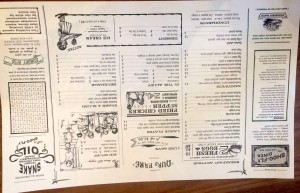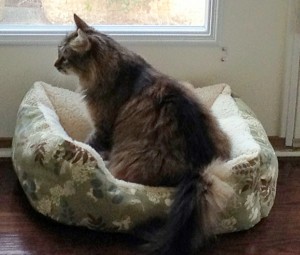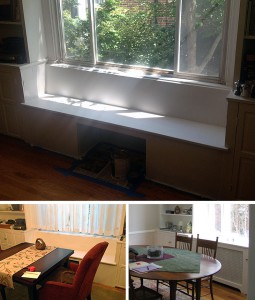Karen Holtzblatt, InContext Design; Ilpo Koskinen, Aalto University; Janaki Kumar, SAP Labs; David Rondeau, InContext Design; John Zimmerman, Carnegie Mellon University
- Karen: we believe the methods need to change for today's world
- review Contextual Design briefly; worked for 25 years, from green screens until the internet of things; in 2009 realized technology was everywhere and changed how people lived their lives
- The Cool Project: can we design a cool experience? led to 7 concepts that drive the “cool” metric; joy is the central concept; also, accomplish, connection, identity, sensation; plus, direct into the action, the hassle factor, the delta
- Focus on core human motives, not just cognition; new methods to get and represent and use data; new ideation practices; wider design principles; UCD is not an option, it's required, and it must change now
- Ilpo: industrial and interaction design, design methods, Nokia and Ericsson 10 years ago
- 2002 – traditional methods in tumult; burning rail yard in Helsinki; took pictures of people taking pictures; methods being taught were failing; focused on contexts that were easy to access – home and office; now there were way more contexts; education trapped in grip of the old methods
- method: use the web to see/capture/log observations with images as it happens; context is ubiquitous, social processes as they happen, the web as eyes, openness, legal and ethical issues
- Janaki: leads design team in direct interaction with customers around enterprise software
- SAP: 250,000 global customers; 400,000+ screens in use; hard to adopt changes; monolithic systems
- individuals now have the best tech at home and demand that experience at work; consumer user experience is now the standard and expectation
- SAP's Fiori breaks up monolithic systems into small, focused apps, that fit into daily life and solve problems; UX used new methods; service or experience designers; cross-functional teams with design expertise – T-shaped; focus on changing end-to-end solutions
- David: oversees all design teams
- Design for Life: traditional design focused on large products to solve many problems for many people; put everything in front of users; users had to figure out what to do; users were at desk in front of product and learned to use them
- we don't actually work this way anywhere; do our work where and when we want, interleaving our personal and professional tasks; monolithic apps don't work for this; design for attention; reduce complexity and learning requirements; small, focused intents, with shared data and tools
- mobile first, responsive design, and agile/lean processes may help, but focus on technology and process – the how not the what
- need field work that is inclusive of all of life; new models, processes, and tools; focused innovation efforts; validate concepts before building; involve every part of organization in the work
- John: formerly Phillips smart TV stuff, now CM professor
- person-place-time view: visualize where and when family members are doing what; virtual possession concepts for teenagers; Tiramisu: transit users crowdsourcing arrival time
- designing services not products, including environment, jobs, and scripts; customers/buyers are different than users; more complex sets of stakeholders; design things for huge virtual crowds
- human computation as a resource; participatory sensors – people and their device seas sensor network; big-data focus on data set; user focus is inadequate
- machine learning, inferences and errors; interaction designers don't know or use it, and don't understand errors machines make with no common sense
- Service design is where we need to go: users can provide things for the provider; unfortunately focus on redesign and avoids change and technology; need new todos for designers
- Q: Tasks and users aren't enough, so what should we do to get a 360 view? Maybe service design, but very conservative. Emotion and empathy is important. Focus on day in life and what people do all day and model it. Tech will continue to get smaller and more embedded. Need to study way more than just users: data and other tech opportunities, play with materials and invent and study. “Understand people and that there is more in the world than people.”
- Q: I haven't really heard anything new, though the world is really changing, so classical UX design is beside the point. Lots of startups throw stuff out there and see what works. Not prototypes but testing risks. What do we do with that sort of model? Still feels a bit like engineering driven design, but we can make better guesses if we have research methods that drive them. Can we instrument these things to get information to drive our thinking. Privacy makes it hard to get the data, both by individuals giving up their rights and businesses being overly private. Need to have consent and protect privacy and identity.
- Q: There seems to be something above and wrapping the methods, such as principles, that we could use to drive the development of these methods. What might those be? Must go back and realize that the materials we have should drive what we might be able to do with them. Focus on more than the users, and use the methods we know from those other areas. Users must understand what they can do with these materials or the won't be able to use them. Who are the people? What materials do they have? How can they use them?
- Q: I know how to do the traditional artifacts in my research. What are some of the new artifacts that I could use to communicate this information? Need cross-functional collaboration in project teams so you don't need as many artifacts. There are new models, such as in the Cool Project – day in the life, identity, value flow modeling (find the economic model first to target the right users).
- Q: Many of our great methods still work, but the way we work has changed. Cross-functional teams seem larger than what agile methods would recommend. How do we reconcile those contradictions? T-shaped people on small, focused teams for projects in context of a larger overall organization and business drives. Test things you think people will hate; often you see they don't and you learn things.
- Q: Some kinds of products maybe shouldn't be trendy. Maybe sometimes we should prevent doing stupid things, eg air-traffic control on an iPhone? Study people in context and don't build things people don't want or need. People are effective at making choices. Allow them to do so. Keep simple things simple, but don't assume all work is simple. Researchers shouldn't be the brakes on ideas, the market should be. We should paint encouraging paths to guide.
- Summary: HCI education needs to change and keep up and open doors. Business apps can be experientially positive. People will use the tools they enjoy instead of bad business apps. Design beyond the user but end to end process design. Human behavior goes way beyond the technical. If we aren't capable with the new materials – like machine learning – we'll miss opportunities. Methods evolve, maybe the words change, materials evolve, must evolve what we do to bring success to the organizations we work for.




